| Architect |
Joseph and Smitherm |
| Date
Built |
1901 - 1906 |
| Location |
Beside St.
Patrick's Cathedral in Dublin |
| Description |
|
|
Edward
Guinness, the first Earl of Iveagh and
great-grandson to the founder of the
Guinness brewing empire, established the
Iveagh Trust to address the accommodation
needs of the poor of Dublin and
London. In Dublin the Trust
commissioned the architectural practice of
Joseph and Smitherm to design the
development which involved sweeping away
the slums that the poor occupied and
replacing them with:
A. 4
five-storey housing blocks, containing 250
tenaments and 26 shops on Bride Street and
Patrick Street.
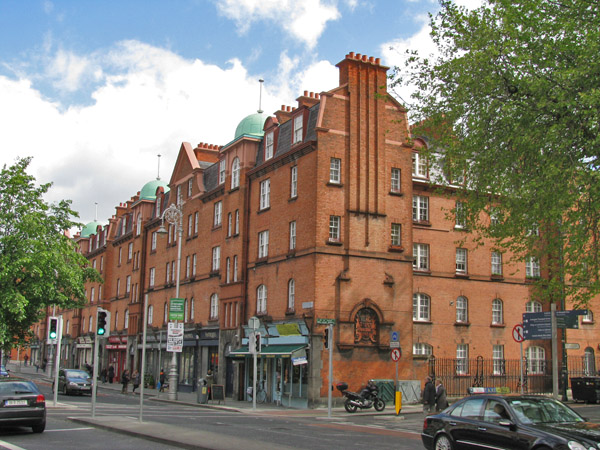 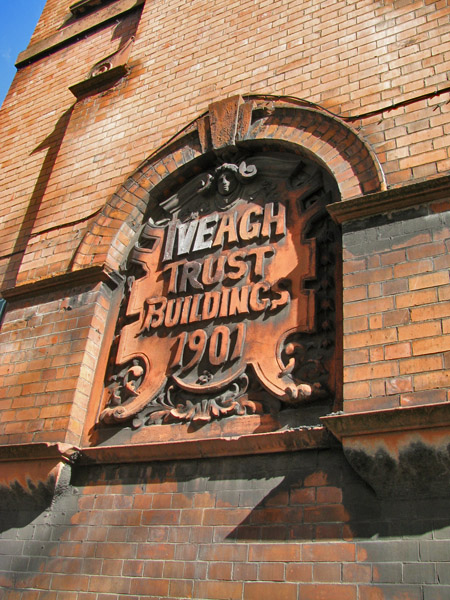 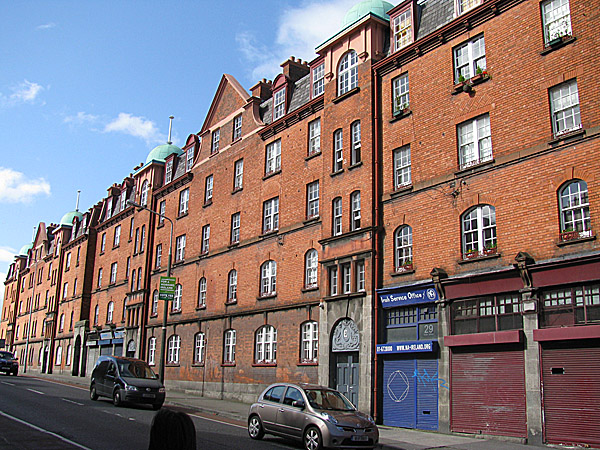 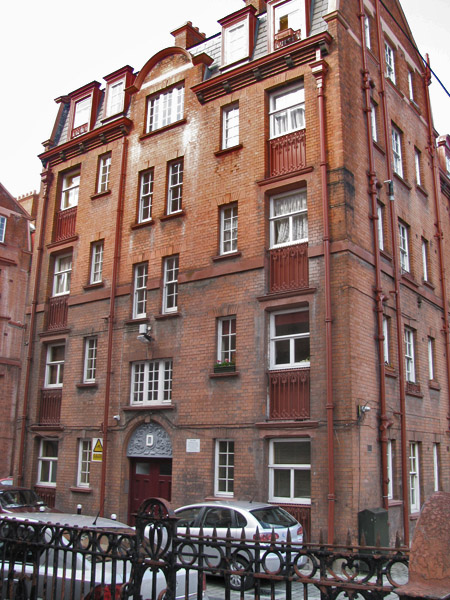 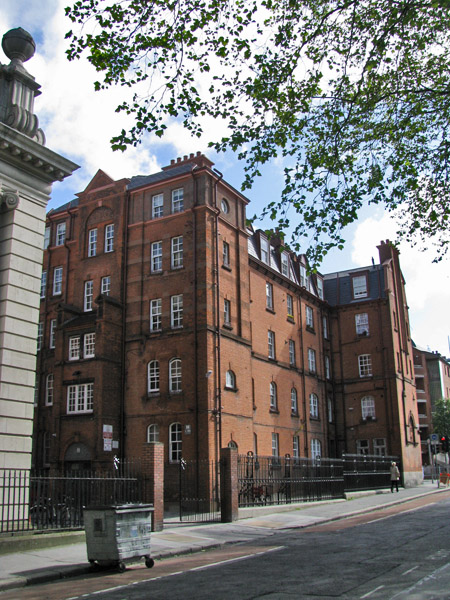 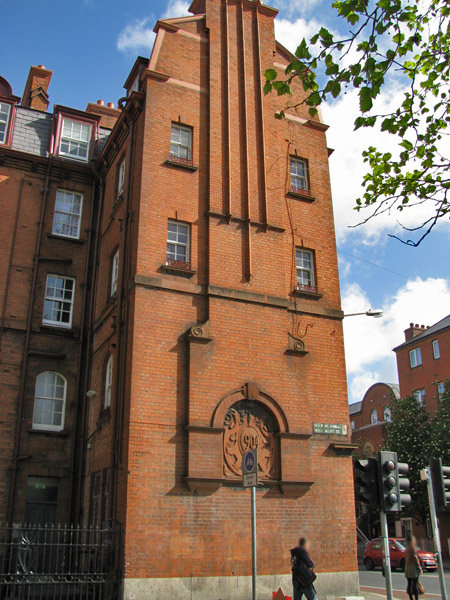 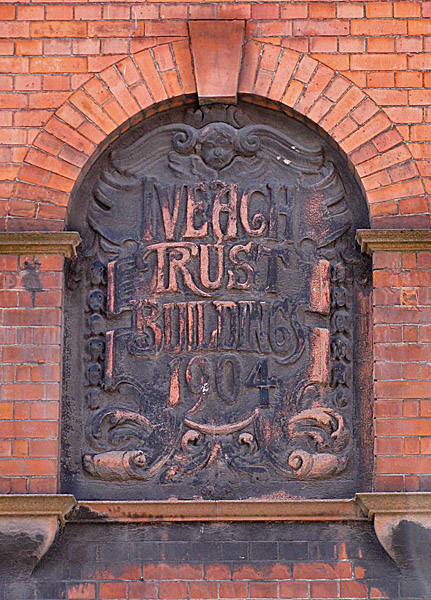 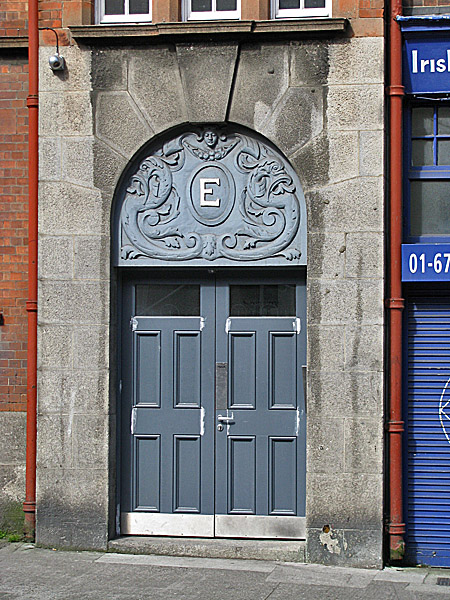 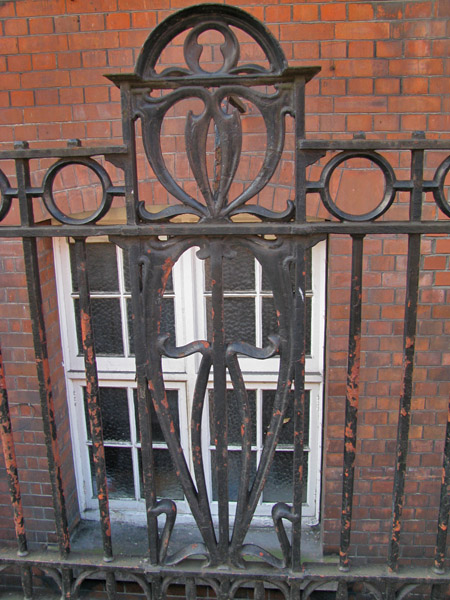 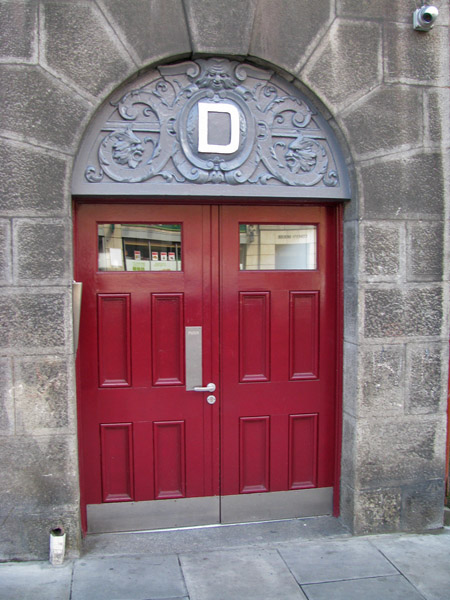 ***** B.
Iveagh House - a workman's hotel - on
Bride Road, which contained 516 cubicles
and communal washing and dining
facilities. According to Wikipedia
this building is now the Iveagh Hostel "for homeless men, providing
basic accommodation, meals and such
facilities as a gym and a computer
room. The original ... cubicles have
been converted to 195 bedrooms."
 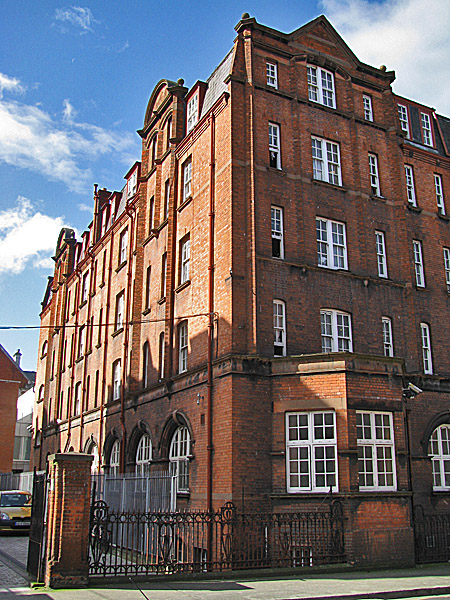 ****** C. A public baths on Bride Road 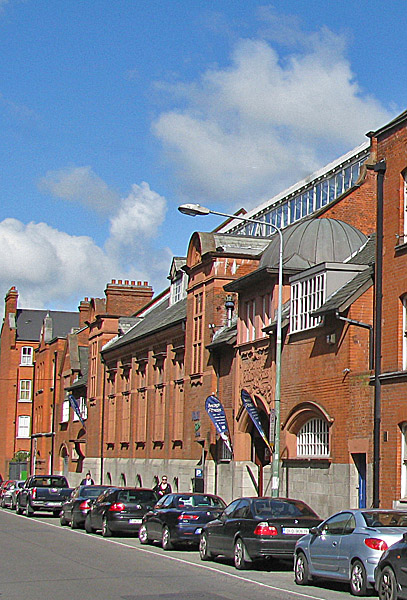 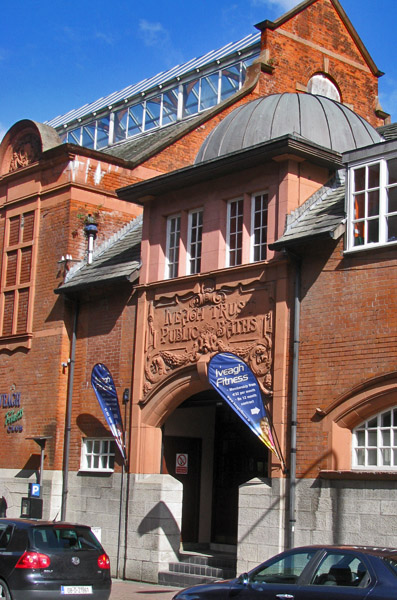 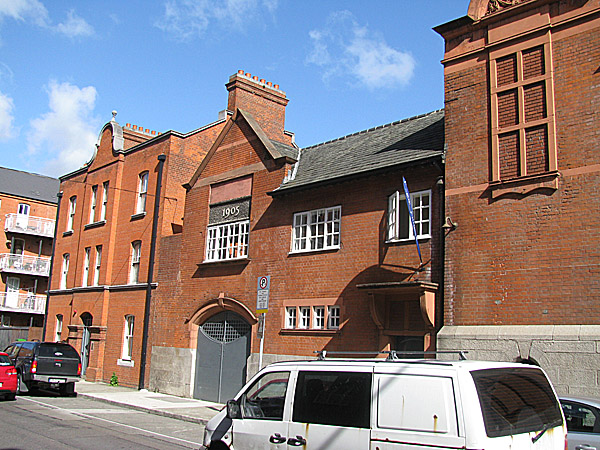 ***** D. A park beside St. Patrick's Cathedral. 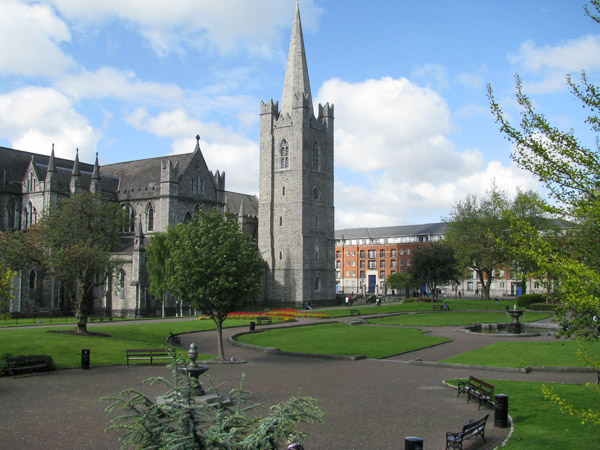 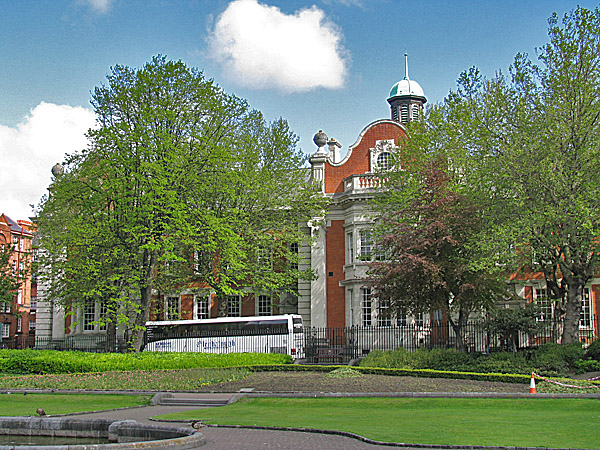 ********************** In 1911
the Trust spent £35,000 to add another
buiding to the site fronting on to Bull
Alley, across from the park (seen in the
image above). This was a play
centre that contained 11 classrooms,
three large halls and had an outdoor
playground. The architects were
McDonnell and Reid and their design was
for a building in a Flemish Renaissance
style faced with Ballyknockan granite
& Kingscourt bricks. It was
completed in 1913.
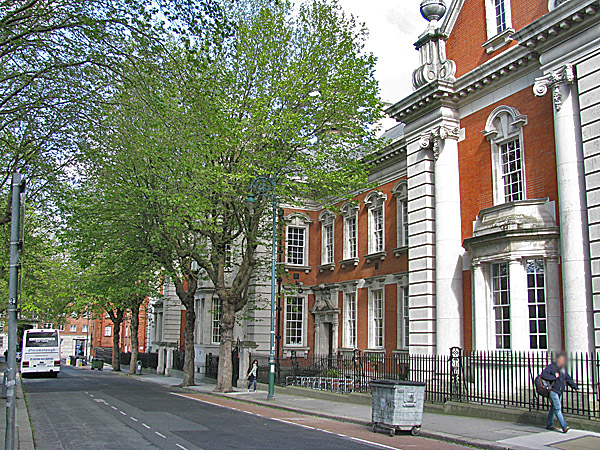 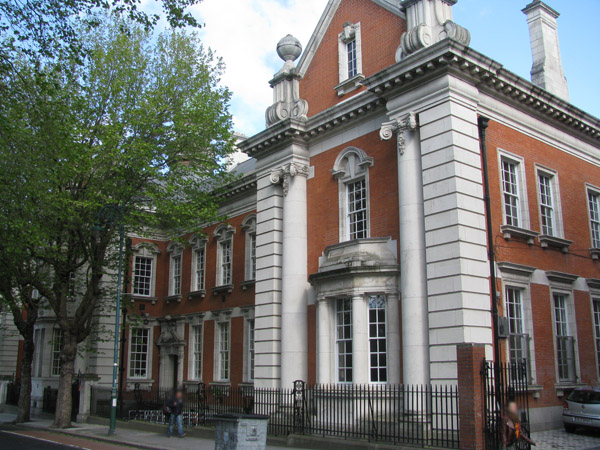 The "Liberty" website (A local newspaper for the Liberties area of Dublin) outlines the building's history. "The Play Centre became popularly known as ‘the Bayno’ and was the centrepiece of the Guinness family Iveagh Trust renewal scheme .... The building continued to prosper until eventually it closed its doors in the early 1970’s. It would not stay shut for long though as there was a growing demand from the locals for (a) local vocational school to cater for the educational needs of their children. ... The school was purchased by the Department of Education in 1977 after vigorous rallying done by members of the Liberties. The school was renovated in 1978 to modern standards and was reopened as The Liberties Vocational School in 1979. The college continues there to this day." |
|
|
Iveagh
Trust, Dublin
|
